
‘Afraid of the water’? Life in a city that dumps billions of litres of raw sewage into lakes and rivers
10 billion litres of sewage are dumped into Winnipeg’s lakes and rivers each year. Some...
They came from thousands of millimetres away to compete in what must be one of the slowest events on earth, Bowen Island’s annual slug races. That’s right: those slimy, soft, land-crawling invertebrates that love your garden greens can also be fierce competitors.
On a muggy August day this summer, over a dozen local slugs were transported to the track by their human slug jockeys in makeshift stables of plastic fruit containers, used Tupperware or plush mini aquariums lined with moist moss, dried leaves and sticks. “You might not be able to see a blackberry but I have it inside,” said Bowen Smith, a five-year-old veteran slug racer who trained Dug the Slug for this year’s competition.
Slugs of all sizes competed in the foot race for gastropods as part of Bowfest, an annual community event on the small island off the coast of Vancouver. The island tradition is a reminder for humans to slow down, create community and celebrate the quirky side of life, slug race organizers told The Narwhal. “Slugs of any political persuasion are invited to join,” read the call out for the first ever Bowen Island slug races in 1977. “The first three across the finish line will, after appropriate drug tests, be given appropriate prizes.”
Forty-five years later, the tradition and drama of slug racing continues. Slugs are placed in individual lanes lined with guardrails to direct racers towards the finish line and discourage slug pile-ups. Competitors have 20 minutes to get as far as they can on a wooden track of about 100 centimetres.
The slug that makes it the furthest wins — competitors sometimes make it all the way to the finish line, but they often don’t. One controversial year, a speedy snail snuck in. It won and outcry ensued. Since Snailgate 2007, this 100-centimetre dash has been strictly slug-only.
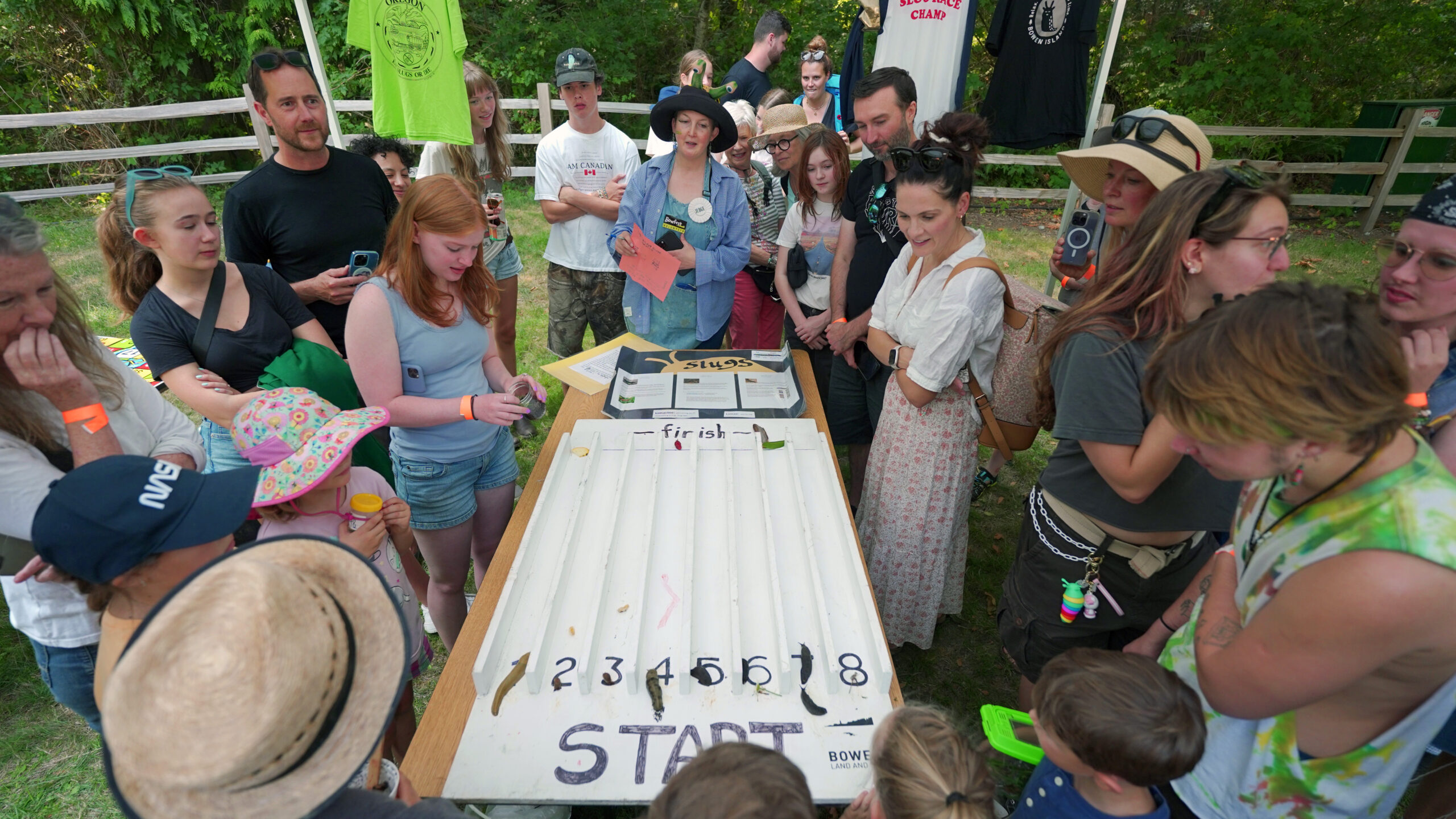
This year the competition was intense, with tentacle-to-tentacle finishes, disqualifications and even a slug-napping.
“I didn’t invent this slug race, but I grew up with it,” Bowen resident and race organizer Sarah Haxby said. She’s kept the tradition alive for several years and loves seeing kids learn about and care for the tiny creatures. Part of the race is “celebrating our slugs,” Haxby added. While the lettuce-lovers might cause some challenges for gardeners, it’s important to appreciate local species, she said.
“I just love it because it’s getting kids to look at small slimy things, to name them, to think about them, to learn about them, to identify with them and to care for them.”
Caring for slugs is important, especially in British Columbia, which is home to more than 25 different species. Nine are listed as threatened or of special concern by either Canada’s Species at Risk Act or provincial rankings. Slugs play a vital role in keeping ecosystems functioning by digesting dead and decaying plant and animal matter and pooping out the nutrients that enrich soil.
“They’re part of the little micro critters that essentially keep the world clean,” Dwayne Lepitzki of the Committee on the Status of Endangered Wildlife in Canada said. Without slugs and snails the world would be full of leaf litter and plant matter.
The Committee on the Status of Endangered Wildlife in Canada, which assesses species at risk, started looking at “animals with fur, fangs and feathers” in 1978, Lepitzki said. But that only covers a small portion of biodiversity in Canada. Over time, the committee expanded to look at a wider range of life, including soft-bodied invertebrates known as molluscs. It now has a permanent molluscs sub-committee, of which Lepitzki is co-chair.
Climate change and habitat loss are some of the biggest threats to native slugs. Slugs have very specific micro-habitat environments and thrive in damp and dark areas. Hotter and drier conditions, heat domes and floods pose significant threats to slugs.
“It’s been pretty bad here in B.C.,” Kristiina Ovaska, a biologist focused on species at risk, said. Last year was a challenge with a record-breaking drought, then came the cold.
Slugs have various techniques to survive cold winters and hot summers. The Meadow slug, found north of Iqaluit on Baffin Island, can tolerate freezing for short periods of time and even survive submerged under water for days. To get through droughts and heat, slugs bury themselves and hide under root cavities or leaf litter to seek moisture. By huddling together they can reduce moisture loss. In the winter, some slugs hibernate, and in hot summer droughts they aestivate — the term for a dormant state of slowing metabolism in the summer.
The conditions this year have also been particularly challenging. British Columbia is experiencing severe drought across the province. We’re still getting through Canada’s worst wildfire season on record, killing and displacing all kinds of animals. And, unlike other creatures, slugs aren’t always able to make a quick escape. “If you’re a deer or a bird, you can fly, you can get away from that fire which is encroaching,” Lepitzki said. “But if you’re a slug and a terrestrial snail, what can you do?”
At the races, slug jockeys were hoping to motivate their slugs to a race-winning speed. Many jockeys carefully placed treats such as blackberries, strawberries, zucchini slices and lettuce leaves at various points on the track as an incentive. Eight-year-old Courtney Peerless, a longtime racer, trains slugs by placing them in lanes and bribing them with grass. “You should train them, but then after, let them rest,” Peerless advised. This year, she entered a big banana slug found under a “really wet log.”
The Pacific banana slug is a popular species on Bowen Island: the fair’s mascot is Bo the Banana slug who wears a ball cap, has a wheat stalk hanging from its mouth and has a very chill vibe. One of the largest slugs in the world, it can grow up to 26 centimetres long. The banana slug is “all over the place” and not at risk of going extinct, Lepitzki said, adding that the little creature is “one of the good guys” — a native slug that’s pretty benign and more interested in eating decaying plants than your garden.
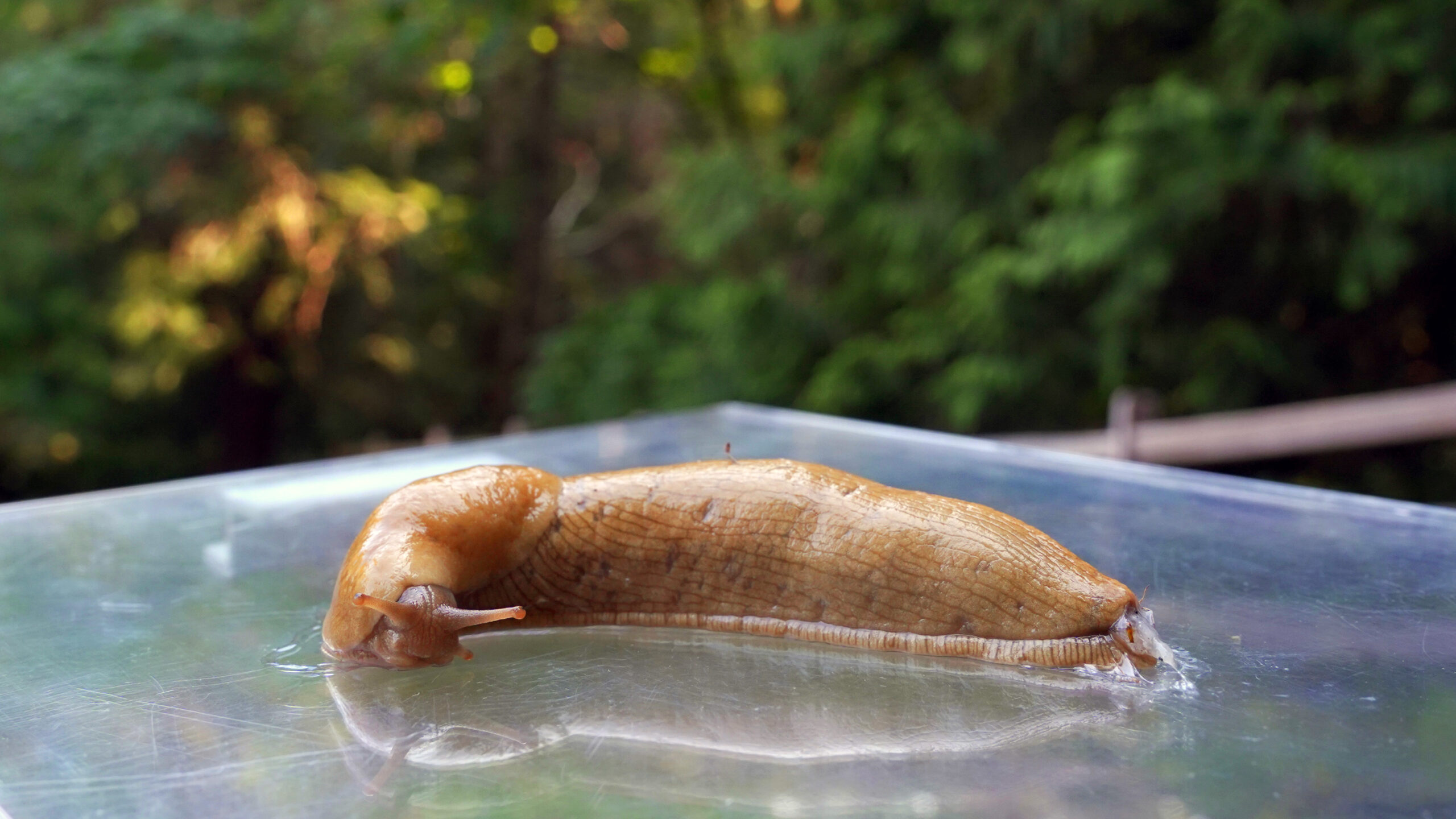
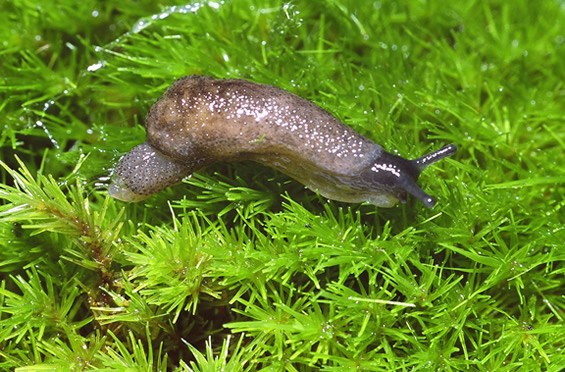
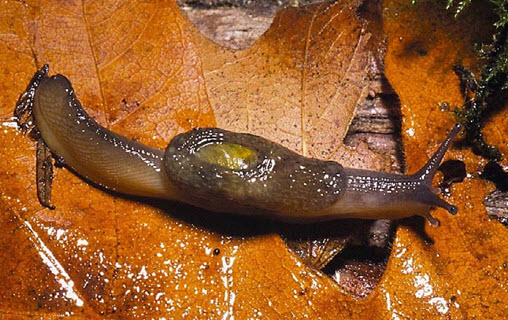
The bigger threat to your kale patch, and to native slugs, are invasive slug and snail species. Many were brought over to North America in the 1800s. Some species likely hitched a ride over with European colonizers, while others were intentionally released into the wild. “Those are voracious eaters and they go after your green garden,” Lepitzki said. Invasive slugs and snails compete for resources with native slugs and can also eat native slugs or their eggs.
One example is the predatory leopard slug, also known as the great grey slug, which can grow up to 20 centimetres long. It loves eating young crops and hunts other slugs at a top speed of 15 centimetres per minute. Thankfully, for the second year in a row, no leopard slugs showed up at Bowfest.
The first of three heats of the day saw eight slugs go tentacle-to-tentacle. Heinous, a black slug, caused controversy when it climbed over the guardrail and crashed into another slug shortly after the start of the first heat. Slug handler Sophia Glaubach was visibly upset after the disqualification. “Make sure they go the right way,” Glaubach warned future racers as Heinous was released back into the wild.
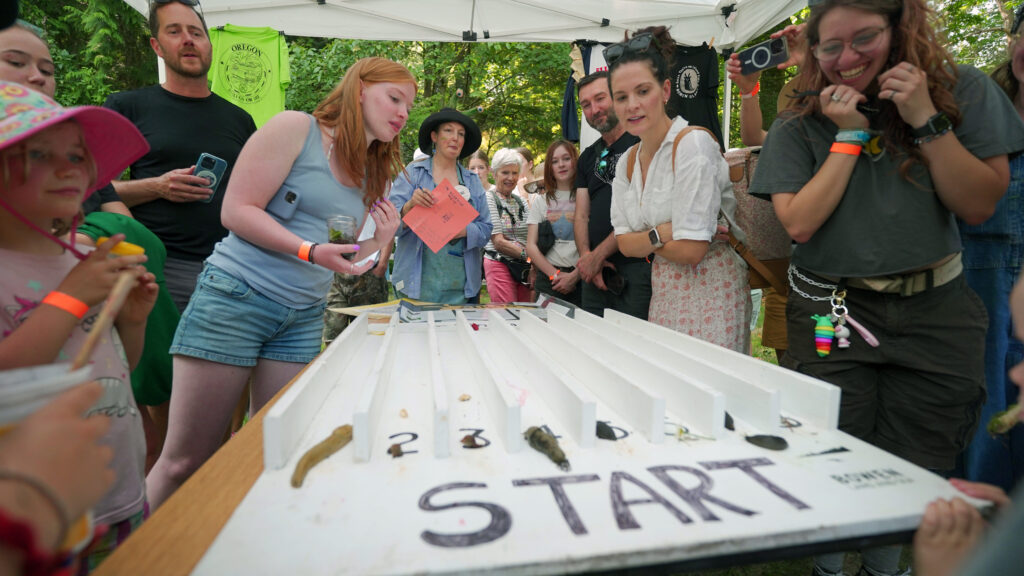
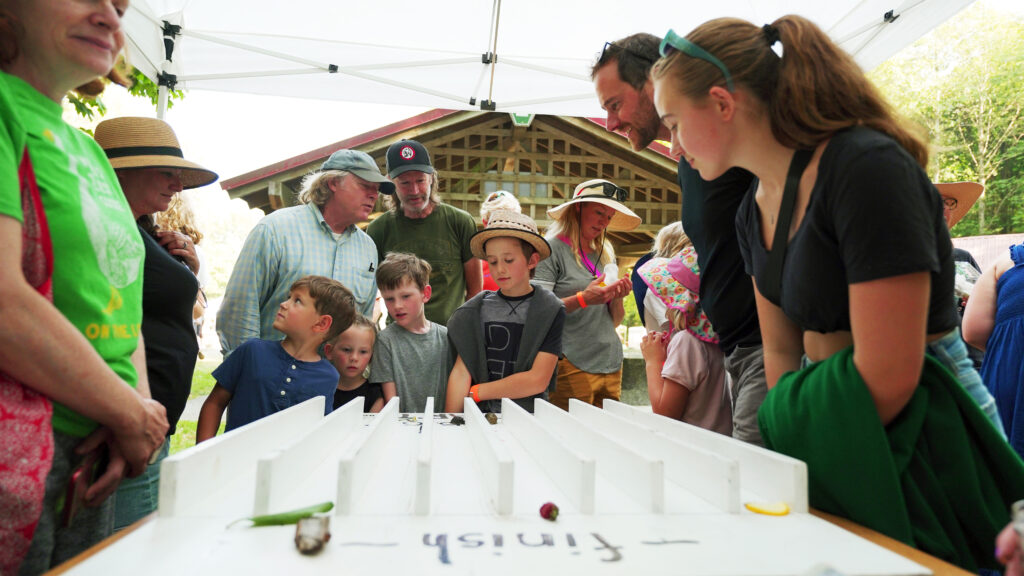
The exact technique to ensure a slug goes forward is an enduring mystery. Staring down the race track, a slug doesn’t have the same view as a human would. Most slugs have two sets of tentacles, with the upper ones sensing light and dark and the lower pair tasting and touching the world. “If you had areas on your slug race track which are more dark and damp, they might actually go towards those areas,” Lepitzki said. Another tip for slug racers out there: mist your slug and keep its temporary carrier moist.
Food is likely a good motivator as well, Lepitzki said. He helped raise slugs and snails for research at the University of Alberta and fed them lettuce and carrots slices rolled in calcium carbonate. Slug contributions to science include helping us understand veterinary parasites and inspiring a life-saving medical adhesive.
After 20 nail-biting minutes, first prize was awarded to Selena, the slug raced by three-year-old Cali Smith. But the celebration was short lived as immediately after the race, Selena disappeared, snatched up by another competitor. As allegations swirled that the prize-winning slug was stolen for its speed, Smith’s sobs echoed across the race track.
Shortly after, Selena was returned by another racer. An investigation is not ongoing, as observers agreed the situation was most likely a case of mistaken identity.
Slug mix-ups were a concern for Bob Kingsmill, who brought the first slug races to Bowen Island in 1977. “I made runways with two-inch high walls so the slugs would just stay within the confines instead of going into a great mess, because I realized you couldn’t put numbers, like you do on horses, on slugs,” Kingsmill told The Narwhal.
The Bowen races were born during a time of turmoil and hope. As Vietnam draft dodgers sought refuge in Canada, the island’s burgeoning population saw old-growth trees being taken down to make way for development, Kingsmill said.
“There were people on the island who wanted to slow things down,” he said.
For Kingsmill, hosting playful, positive gatherings helped build positive connections and a sense of community. He couldn’t remember how he came up with the idea to start the quirky competition, but communities across the Pacific Northwest have been hosting slug races as far back as the late ’60s.
The Narwhal found evidence of slug racing in communities across British Columbia, such as Richmond, Delta, Cortes Island and Victoria, going back to 1985. Cortes Island has hosted slug races on and off over the last 10 years. This year, conditions were too dry to host a competition.
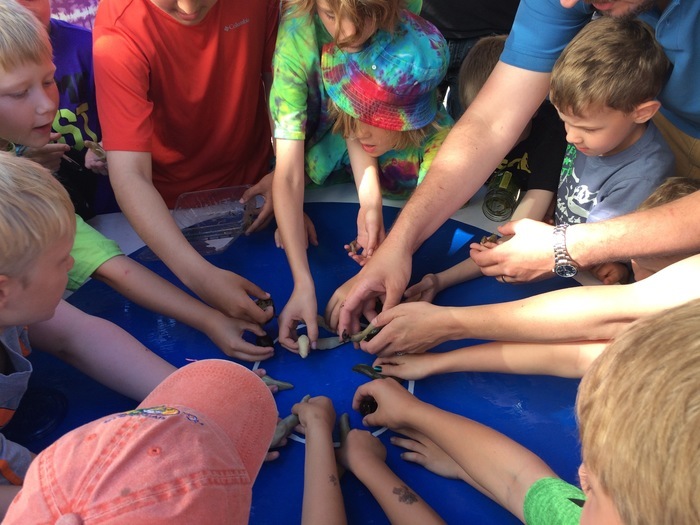
In Ketchikan, Alaska, the track is completely different than on Bowen Island, seeing slugs placed in the centre of a track painted with concentric circles and racing outwards. Heidi Ekstrand helped found the races, which take place at the annual Blueberry Arts Festival, in 1981, and was “slug master” for about 25 years before retiring.
“It really is exciting,” Ekstrand said. “You can have 20 slugs on the track and every kid will know which slug is theirs. They are piled up along the edges of the track and yelling and cheering. And sometimes the finishes are really spectacular.”
“The main thing I would really emphasize to people is to treat their slugs humanely,” Ekstrand said. “We’ve never had a slug left behind on the track.”
The Ketchikan slug races were inspired by races in Florence, Oregon, which started in the mid to late 1970s at the community’s annual Rhododendron Festival. Organizers did not respond to questions if the race is still ongoing.
And the earliest slug race The Narwhal found evidence of was in 1968, when Prairie Creek Redwoods State Park in Northern California began hosting a “Banana Slug Derby.” As legend has it, the race was started by state park ranger, Paula Pennington.
“There were a lot of banana slugs at Prairie Creek and you’re constantly moving them so they wouldn’t get stomped on,” Pennington told The Narwhal. One night, she and her colleagues — “a bunch of young college students entertaining ourselves” — decided to race them. It was so much fun they ended up building a circular track for what became an annual event.
The goal of the event was education about banana slugs and their important role in fertilizing soil and eating plants that compete with redwood trees for nutrients. “The public was always going, ‘ew’ to banana slugs, ” Pennington said. “Most of the public was not aware that slugs were anything but snails without a shell that you wanted to kill in your garden.”
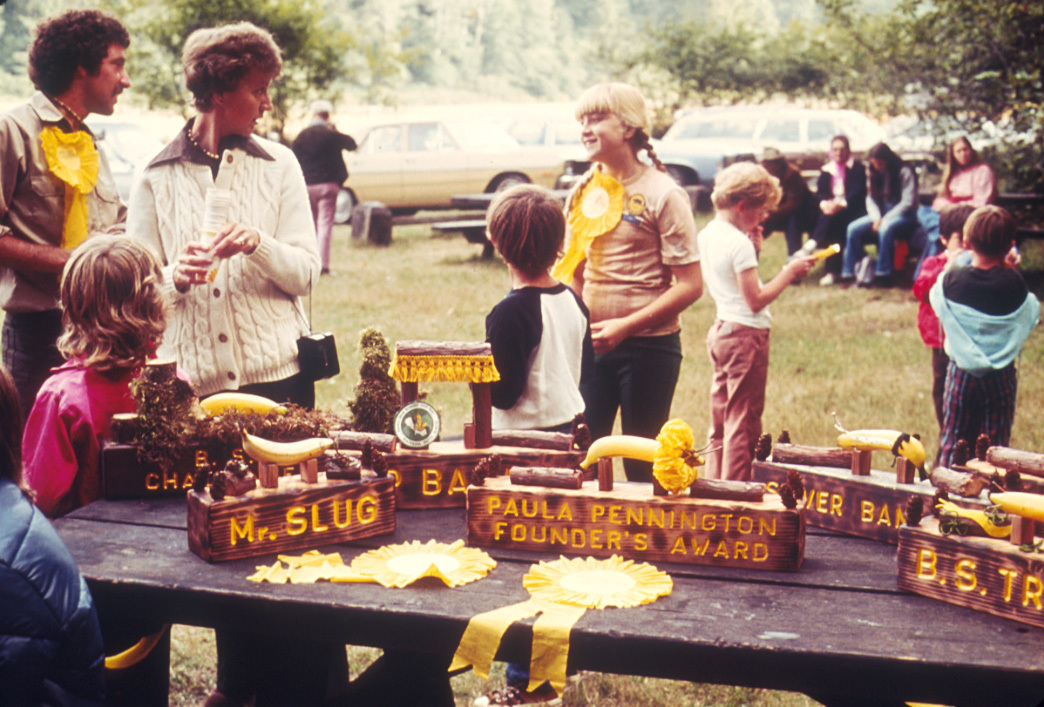
“We thought we had invented something,” Pennington said, when asked about whether she had originated North American slug races. “At that point there was no Internet, none of that stuff to look it up and see if anybody had raced before with slugs.”
Prairie Creek Redwoods State Park stopped hosting the event in the early 2000s, making it possible that Bowen Island is currently home to the longest-running slug races in the world. (But that is a hefty title and we are looking for more slug race history if you have evidence otherwise.)
At the first slug races on Bowen, Kingsmill was worried people might transport big slugs from across the Lower Mainland to compete. The rules now limit entries to slugs found on Bowen Island to reduce the impact on the species.
Which makes sense, although it would have been an exciting surprise to see a dromedary jumping-slug at the races. This threatened species escapes predators by writhing and leaping around. It can be found on Vancouver Island and in northwestern Oregon and can live for more than a year.
Slugs can be found in almost every kind of habitat from grasslands and tundra, to marshes and forests. They are found all around the world, except for Antarctica. Generally, except on race day, a large slug likely doesn’t move more than several metres over its entire lifespan — some tiny species likely don’t move more than a few centimetres. Bigger trips are thanks to rides on mammals and birds or getting swept away in strong winds and water currents.
“Being a slug is some distance from my reality, though I periodically feel sluggish,” Kingsmill said as he tried to recall the details of the first slug race.
The slug races bring attention to an important species that’s often overlooked. B.C. does not have standalone species at risk legislation and biologists, environmentalists and researchers have warned the lack of provincial protections leaves big gaps in protecting biodiversity. Species on some federal lands are protected, and most of the federally assessed slugs in B.C. are of special concern, one step before threatened.
“If we don’t do things properly, if we allow the threats to increase, then that species could very well become threatened or endangered or even be lost from B.C.,” Lepitzki said.
Despite the frustrations of slug-eaten plants, Lepitzki advises against killing all the slugs in home gardens, which could endanger native slugs that aren’t actually a big threat and could be at risk. “In terms of nutrient recycling, [native slugs] are really important to biodiversity,” and could be helping your garden by eating dead leaves and weeds and adding nutrients to the soil. He recommends people try to identify slugs before deploying any slugicide techniques.
“The most important thing is habitat protection, at all different levels,” Ovaska said. She advises people try to keep their backyards and property as natural as possible and be careful not to introduce invasive species, which might be brought to new areas on nursery plants or through moving soil and leaf litter around.
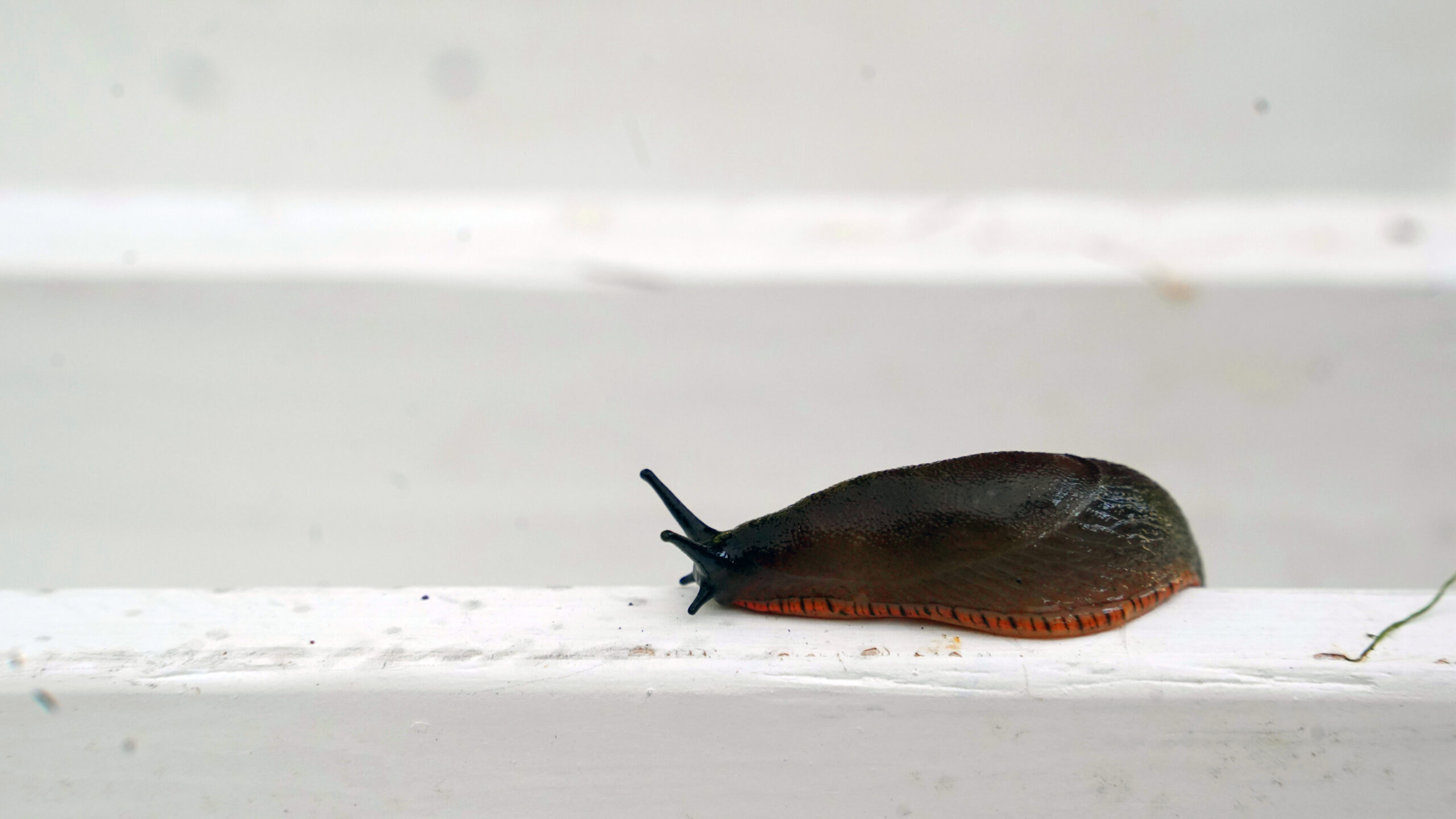
Back at the races, parents and kids alike spent the afternoon cheering and screaming for their little critters to move just a little closer to the finish line. “The slug race is something I competed in as a kid,” Verena Kaminiarz said. This year, she helped her seven-year-old daughter Freja prep a competitor named Tiny Hero for the final heat of the day. “It’s just something that has continued on and it’s great to bring my kid down here too.”
Prizes were awarded to human jockeys as a token of time spent with their temporary slug companions. The slugs were quickly released back into nature, ideally close to where they were found. Following community fairs across the Pacific Northwest, retired slug racers are roaming the forests, tentacles held high as “ews” become cheers for their important, overlooked species.
Get the inside scoop on The Narwhal’s environment and climate reporting by signing up for our free newsletter. On a warm September evening nearly 15...
Continue reading
10 billion litres of sewage are dumped into Winnipeg’s lakes and rivers each year. Some...

Court sides with Xatśūll First Nation, temporarily halting Mount Polley mine waste expansion

Break out the champagne: Emma’s storied life and leadership in journalism has earned her the...
